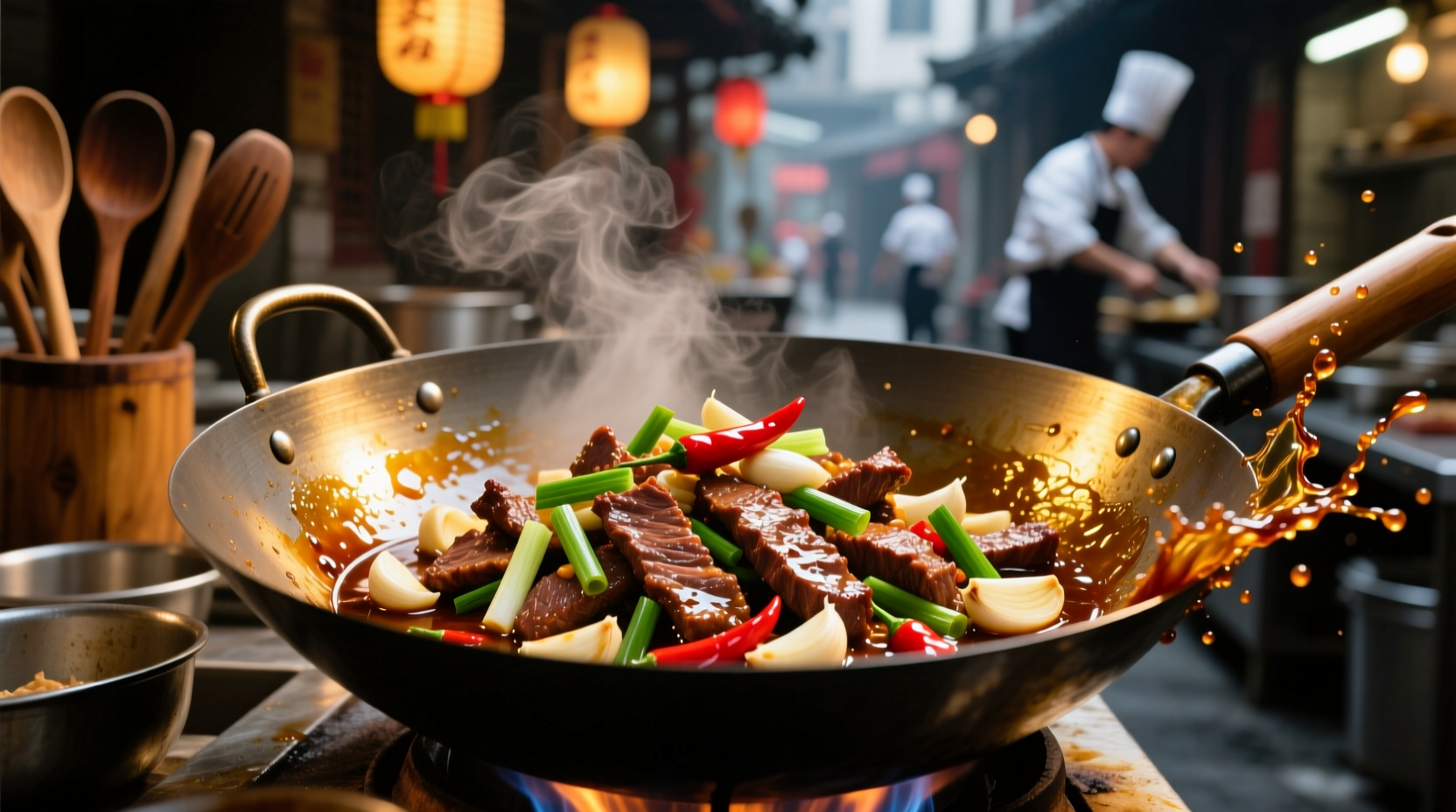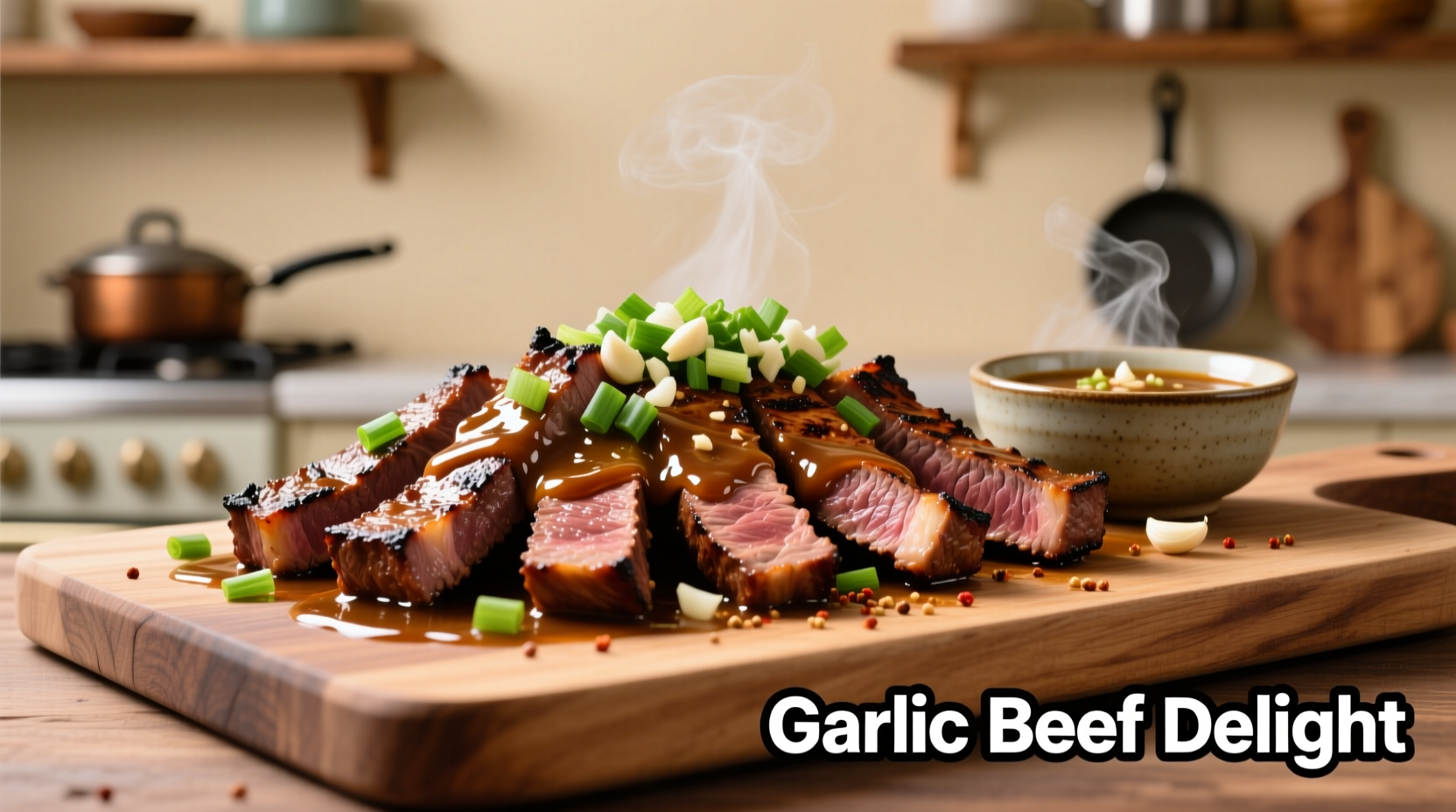The Essential Guide to Perfect Beef with Garlic Sauce
Beef with garlic sauce represents one of Chinese cuisine's most beloved comfort foods, combining tender meat with a rich, aromatic sauce that balances savory, sweet, and umami notes. This dish has evolved from humble street food origins to a staple in Chinese restaurants worldwide, yet many home cooks struggle to replicate the authentic texture and flavor profile they enjoy at professional establishments.
Why This Recipe Works
Unlike common Westernized versions that drown the beef in sugary sauce, authentic Chinese beef with garlic sauce relies on three critical elements: proper meat preparation, precise sauce ratios, and controlled high-heat cooking. The magic happens when these elements work in harmony, creating that signature "wok hei" (breath of the wok) that defines exceptional stir-fries.
Regional Variations Compared
While often presented as a single dish, beef with garlic sauce actually varies significantly across Chinese regions. Understanding these differences helps you select the version that best matches your taste preferences:
| Region | Sauce Characteristics | Meat Preparation | Distinctive Elements |
|---|---|---|---|
| Cantonese | Bright, clean garlic flavor with light soy | Velveting with egg white and cornstarch | Minimal chili, emphasis on fresh garlic |
| Sichuan | Bolder, numbing heat from Sichuan peppercorns | Quick marination without velveting | Doubanjiang (fermented bean paste) base |
| Hunan | Intense garlic with pronounced chili heat | Marinated with rice wine | Fresh red chilies, more vinegar |
| Westernized | Sweet, thick, brown sauce | Breaded or battered | Heavy cornstarch, bottled sauces |
Evolution of Beef with Garlic Sauce
This dish's journey from street food to global favorite reveals fascinating culinary adaptation:
- 1920s-1940s: Originated as affordable street food in Guangdong province, using less desirable cuts of beef made tender through careful preparation
- 1950s-1970s: Spread to Chinatowns worldwide, adapting to local ingredients while maintaining core techniques
- 1980s-1990s: Entered mainstream Western restaurants with significant modifications (sweetened sauce, breaded meat)
- 2000s-Present: Renewed interest in authentic preparation methods among home cooks and chefs

Essential Ingredients Checklist
Authentic flavor depends on precise ingredient selection. Avoid substitutions that compromise the dish's integrity:
Meat Selection Guidelines
Flank steak remains the traditional choice for authentic beef with garlic sauce, but proper preparation matters more than the specific cut. For optimal results:
- Cut against the grain into 1/4-inch thick slices
- Use the velveting technique: marinate with 1 tsp cornstarch, 1 tsp Shaoxing wine, and 1 egg white per pound of beef
- Refrigerate for 30 minutes before cooking
- Never use pre-marinated "stir-fry" beef from supermarkets
Sauce Ratio Framework
The perfect sauce balance follows this professional ratio (adjust to taste):
- 2 parts light soy sauce
- 1 part Shaoxing wine
- 1/2 part oyster sauce
- 1/4 part sesame oil
- 1/4 part sugar (or honey)
- 3-4 whole garlic cloves per serving, minced
Step-by-Step Cooking Process
Preparation Phase (10 minutes)
- Prepare beef: slice against the grain, marinate with cornstarch mixture
- Mince garlic (don't use pre-minced - fresh makes a significant difference)
- Mix sauce components in a glass measuring cup
- Have all ingredients within arm's reach - stir-frying happens quickly
Cooking Phase (8 minutes)
- Heat wok or heavy skillet over highest heat until smoking
- Add 2 tbsp peanut oil (high smoke point essential)
- Quick-sear beef in single layer (don't overcrowd)
- Remove beef when 70% cooked (about 90 seconds)
- Add 1 tbsp oil, then garlic - cook until fragrant but not browned (15 seconds)
- Pour in sauce, bring to vigorous boil
- Return beef to wok, toss to coat (30-60 seconds)
- Finish with 1 tsp sesame oil off-heat
Critical Technique Boundaries
Understanding these context-specific limitations prevents common failures:
- Temperature Threshold: Wok must reach 400°F+ for proper sear; lower temperatures steam the meat
- Garlic Timing: Add garlic only when oil is hot enough to sizzle immediately - too early burns it, too late lacks flavor
- Sauce Volume: Maximum 3 tbsp sauce per serving - excess creates boiled rather than stir-fried texture
- Cooking Surface: Non-stick pans cannot achieve necessary heat; carbon steel or cast iron required
Common Mistakes and Solutions
Professional chefs consistently avoid these pitfalls that ruin home attempts:
| Mistake | Why It Happens | Professional Solution |
|---|---|---|
| Chewy, tough beef | Overcooking or improper slicing | Slice against grain, remove from heat at 70% done |
| Bitter, burnt garlic | Garlic added too early or heat too high | Add garlic only when oil shimmers, constant motion |
| Watery sauce | Excess sauce or improper cornstarch ratio | Use precise ratios, finish with cornstarch slurry only if needed |
| Steamed rather than seared meat | Overcrowded pan or insufficient heat | Cook in batches, ensure proper wok temperature |
Authentic Variations Worth Trying
Once you've mastered the basic technique, explore these regional adaptations:
- Sichuan Style: Add 1 tsp Sichuan peppercorns and 1 tbsp doubanjiang to the sauce base
- Hunan Style: Incorporate 2 fresh red chilies and 1 tsp black vinegar
- Cantonese Style: Use only fresh garlic with minimal chili for clean flavor profile
- Vegetarian Alternative: Substitute seitan or king oyster mushrooms using same technique
Storage and Reheating Guidelines
While best served immediately, proper storage maintains quality:
- Cool completely before refrigerating (within 2 hours of cooking)
- Store in airtight container for up to 3 days
- Reheat in wok with 1 tsp water to recreate steam effect
- Avoid microwave reheating (makes meat tough and sauce watery)
- Do not freeze - changes meat texture significantly











 浙公网安备
33010002000092号
浙公网安备
33010002000092号 浙B2-20120091-4
浙B2-20120091-4